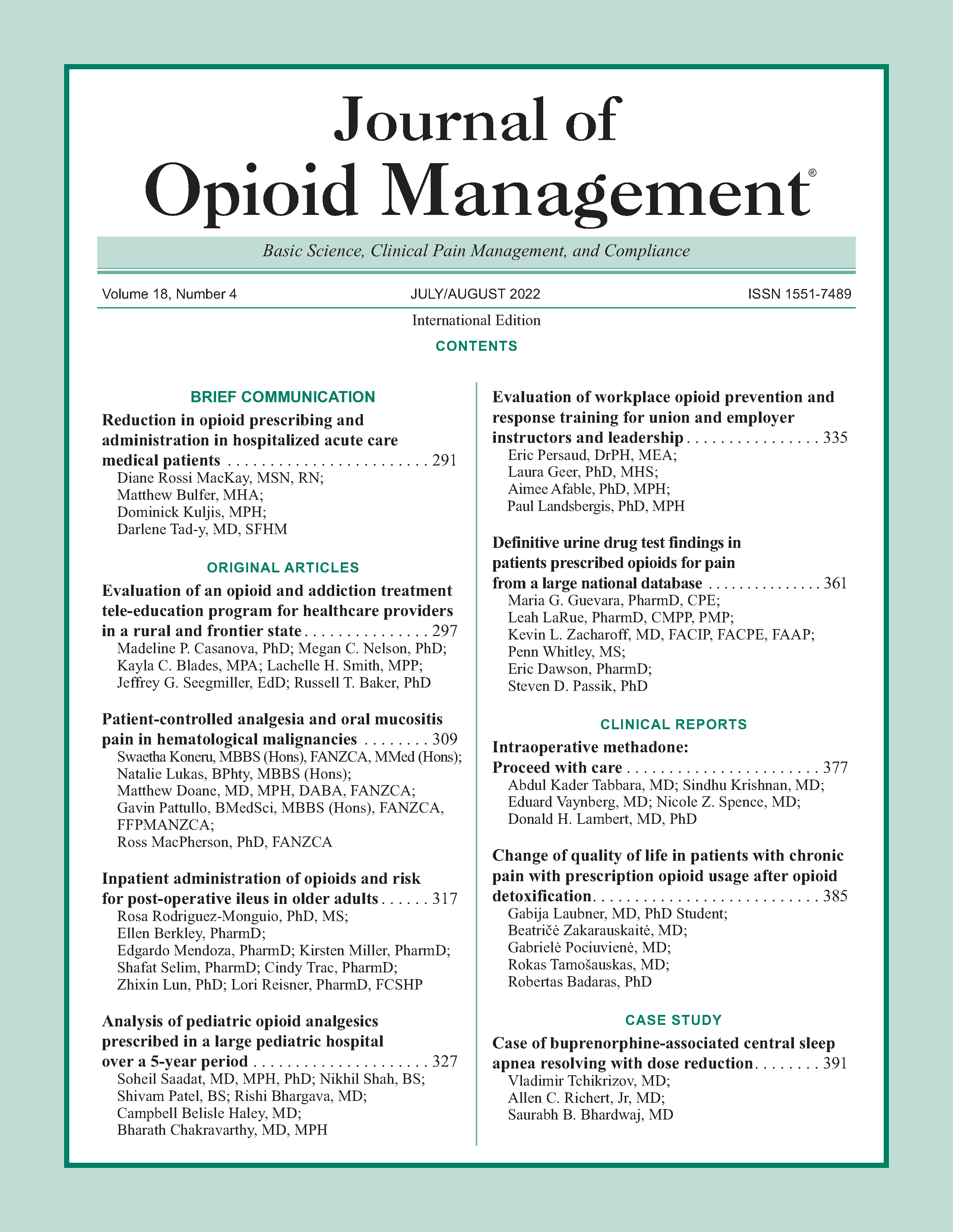Case of buprenorphine-associated central sleep apnea resolving with dose reduction
DOI:
https://doi.org/10.5055/jom.2022.0732Keywords:
buprenorphine, apnea, central, sleep, managementAbstract
Aside from respiratory suppression in overdose, full opioid agonist agents are known to cause sleep-disordered breathing (SDB). The increasing rates of opioid overdose in the United States have led to increasing use of medication-assisted treatments for opioid use disorders. Dose-dependent increase in SDB has been documented with methadone. There is emerging literature in the form of case reports providing evidence of buprenorphine and buprenorphine–naloxone contributing to sleep apnea. We report an additional case of a female patient developing central sleep apnea during initiation of buprenorphine–naloxone treatment. The condition resolved with dose reduction.
References
Schiller EY, Goyal A, Mechanic OJ: Opioid overdose. In StatPearls. Treasure Island, FL: StatPearls Publishing, 2020.
Mason M, Cates CJ, Smith I: Effects of opioid, hypnotic and sedating medications on sleep-disordered breathing in adults with obstructive sleep apnoea. Cochrane Database Syst Rev. 2015; (7): CD011090. DOI: 10.1002/14651858.CD011090.pub2.
Chowdhuri S, Javaheri S: Sleep disordered breathing caused by chronic opioid use: Diverse manifestations and their management. Sleep Med Clin. 2017; 12(4): 573-586. DOI: 10.1016/j.jsmc.2017.07.007.
Yue HJ, Guilleminault C: Opioid medication and sleep-disordered breathing. Med Clin North Am. 2010; 94(3): 435-446. DOI: 10.1016/j.mcna.2010.02.007.
Farney RJ, McDonald AM, Boyle KM, et al.: Sleep disordered breathing in patients receiving therapy with buprenorphine/ naloxone. Eur Respir J. 2013; 42(2): 394-403. DOI: 10.1183/09031936.00120012.
DeVido J, Connery H, Hill KP: Sleep-disordered breathing in patients with opioid use disorders in long-term maintenance on buprenorphine-naloxone: A case series. J Opioid Manag. 2015; 11(4): 363-366. DOI: 10.5055/jom.2015.0285.
Farney RJ: Severe respiratory suppression secondary to buprenorphine treated with volume assured pressure support (VAPS). Int J Anesthetic Anesthesiol. 2015; 2(4). DOI: 10.23937/2377-4630/2/4/1035.
Correa D, Farney RJ, Chung F, et al.: Chronic opioid use and central sleep apnea: A review of the prevalence, mechanisms, and perioperative considerations. Anesth Analg. 2015; 120(6): 1273-1285. DOI: 10.1213/ANE.0000000000000672.
Published
How to Cite
Issue
Section
License
Copyright 2005-2025, Weston Medical Publishing, LLC and Journal of Opioid Management. All Rights Reserved.











